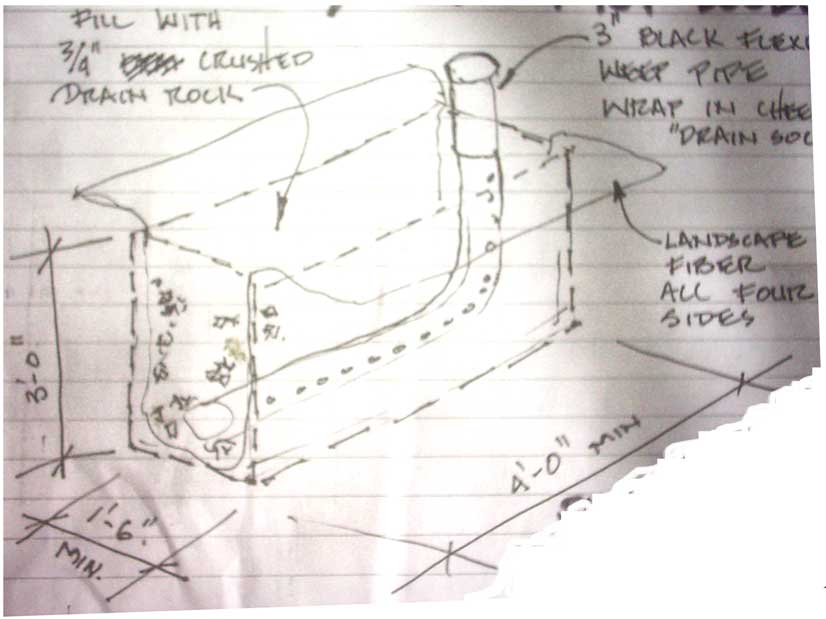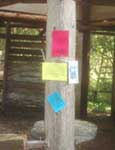Booth Construction and Maintenance Manual
Additions for 2004
SPECIAL CONSIDERATIONS RELATED TO DRAIN FIELDS AND DIGGING
The Fair is located in an "archaeologically significant area" and over the years, people digging post holes and drainfields have exposed substantial evidence of Native American habitation dating to nearly 11,000 years prior to European contact. The Fair's site is an ancient meeting place of Native American people who have come before us. The Archaeology crew ensures that artifacts of our ancestors are discovered and preserved.
All ground-disturbing activities must be reported to Archaeology before the disturbing is done to avoid digging in a registered archaeology site and destroying our non-renewable resource. We can tell you if you are in danger of digging in a site. Every effort must be made to assure we follow our Code of Conduct and protect and preserve the archaeological sites on our property. This year you can find Archaeology in Main Camp across the eating area from the Construction desk and schedule use of sifting screens, and appointments with the on-site representative of the State Archaeologist office.
Last year, we began a survey to identify drainfields that needed expansion or restoration. This effort will continue this year, because the inventory was begun before the Fair and some folks discovered problems later that they did not expect.

Specific Fair policy, based on Archeological concerns is that no "round rock" is to be imported to the site because it confuses the archaeological record. To this end, the Fair has acquired a supply of crushed drain-rock and Construction is prepared to assist you in getting crushed rock to your booth site, and to provide guidance and monitoring as you remove the old rock, sieve out the silt, add a geotechnical fabric liner and weep pipe to the pit and rebury the existing rock along with any additional drainrock that may be required. So far, the Fair has been providing geotechnical fabric for this purpose. Any excavation beyond the drain-field's existing boundaries REQUIRES permission from Construction and Archaeology and careful monitoring by someone sent to your site by Archaeology.
It is NOT the intention of the Fair to make things difficult, it is the Fair's intention to avoid causing unnecessary difficulties. The processes we have in place actually make a great deal of sense, once you have enough information. Screens are available in Main Camp and trained archeologists are available to work with you and monitor your excavation. This is great opportunity to turn some grunt work into a fascinating educational experience. Please refer to the drawing below for direction in your drainfield restoration effort.
Come to construction desk to schedule use of a screen and an initial site review.
After review, remove all round rock and screen it to separate the silt from the rock.
If you believe expansion is required, schedule inspection of your cleaned-out unexpanded hole with Archaeology
All material removed during the drain-field expansion must be screened as it is removed.
If anything is discovered (arrowhead, camas oven, etc. ALL DIGGING STOPS!!!
Filter Fabric confines round rock and double layer at the top of the drain-field prevents silt entry.
No round rock may be hauled to site
Weep pipe must be sealed post-fair so that it does not fill with silt over the winter
3/4" crushed rock is available on site and the Fair will assist you in getting it to your booth.
It is all black and white and grayscale, and should print fine on either a Mac or a PC. I created these files in Word2k and then printed them to Acrobat 4.0, so any recent version of Acrobat Reader can open and print them. Try a small file that prints just 1 page first, just to be sure. Most pages contain both text and graphics.

Back to Oregon Country Fair Booth Construction and Maintenance Manual Page